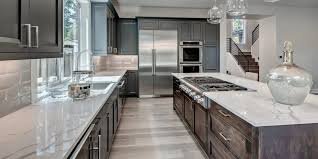Homeowners, building managers, and contractors increasingly value the environment. Green products and activities minimize carbon emissions and improve the environment. Homes, companies, and other structures with eco-friendly materials can increase their worth over time.
Environmentally friendly options also improve building residents’ health. Why not design a greener room or building from scratch? Sustainable, clean, and reliable flooring options are available. One of the best areas for eco-friendly options is flooring. Learn how to invest in sustainable flooring projects.
Characteristics of Environmental Friendliness
The sustainability of a homeowner’s flooring material is a significant consideration for many people when renovating their homes.
If you’re concerned about the environment when installing new flooring, you can use the following criteria to narrow down your search for eco-friendly options:
The Strength
Durability is an essential consideration when selecting an eco-friendly floor.
Longer-lasting products have a minor environmental impact because they aren’t discarded as often. Choices in flooring that can withstand wear and tear are also economical. Due to the reduced frequency with which new flooring must be purchased, the cost per year is reduced significantly.
Manufacturer OF Material
Materials can be obtained on one continent and produced on another. As a result, it’s essential to think about the manufacturing process and origin of sustainable flooring options.
If the raw materials for an American-made floor are shipped in from another country, the final product still has a large carbon footprint. Locally produced flooring is the most eco-friendly option.
Recyclability of Your Floor
All flooring has a finite lifespan and must be replaced at some point. What, then, becomes of the outdated flooring? Can they be reused or recycled into something different?

Many of us don’t give much thought to what will happen to our floors when we move, but this is a crucial factor to consider when it comes to eco-friendly flooring. If your floors aren’t recyclable, they can have a negative and long-lasting impact on the environment even after they’ve been removed from your home.
Floor Raw Materials
Several flooring options are made mostly or entirely from eco-friendly materials. Plywood is an abundant resource, so even the highest quality engineered wood flooring is partially made from it.
Natural materials that can be renewed repeatedly are called renewable resources. The best bamboo flooring is made from bamboo forests, hardwood floor brands use wood, and scratch-resistant flooring tiles are made from clay, all renewable resources.
The Volatile Organic Compound (VOC) Content of Your Floor
Volatile organic compounds, or VOCs, are chemicals used in various industrial processes. New car smell, huh? VOCs. Yes, it’s tragic.
Unfortunately, some products can off-gas these harmful chemicals in your home if you don’t buy low-VOC flooring. While volatile organic compounds (VOCs) are present in many environments, they can be especially dangerous in closed spaces.
What Type of Eco-Friendly Flooring Should I Choose?
It’s up to the individual to decide to use eco-friendly flooring. First, you must identify the causes that have the most severe effects on the natural world around you. You may pick between
- Wood
- Bamboo
- Cork
- Tile
- Linoleum
- Artificial Hardwood
You’ve learned the fundamentals of eco-friendly flooring evaluation, so it’s time to start your search. Please find the best flooring stores near you, and learn about eco-friendly flooring that suits your home.










